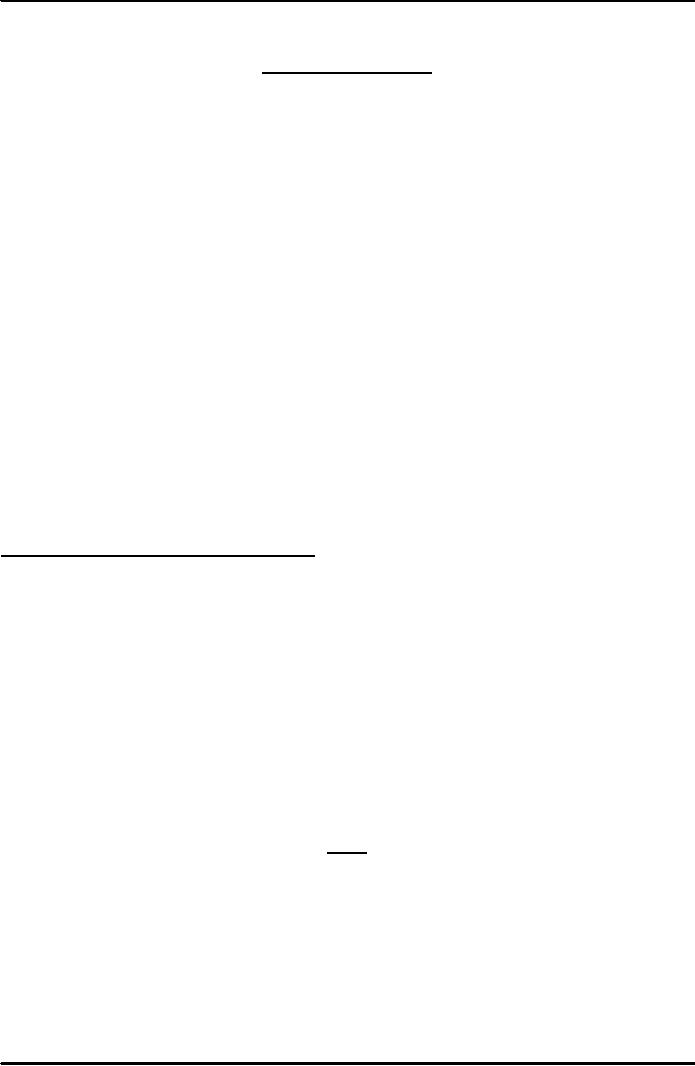 |
WORLD TRADE ORGANIZATION (WTO) PAKISTAN & WTO. II:International Treaties |
| << WTO MINISTERIAL CONFERENCES:PAKISTAN AND WTO |
| WORLD TRADE ORGANIZATION (WTO) PAKISTAN & WTO. III:Agriculture >> |

SME
Management (MGT-601)
VU
Lesson
41
WORLD
TRADE ORGANIZATION
(WTO)
PAKISTAN
& WTO. II
TRADE
RELATED ASPECTS OF INTELECTUALA
PROPERTY RIGHTS
(TRIPs)
As
a member of the WTO, Pakistan is
committed to fulfilling TRIPs obligations. Copyrights
piracy is
considered
very high, affecting imported computer
software, videos, films and
textile designs. Pakistan
like
developing
countries was given deadline of
January1, 2000 (i.e. five
year period) to bring into
conformity
with
the WTO commitment. List copyrights laws
etc. Pakistan is not yet
fully ready to implement
its
commitment.
In
Pakistan, five laws/amendments
have been promulgated, to provide
intellectual property protection
under
WTO standards.
1.
Patents Ordinance, 2002
2.
Trademarks Ordinance, 2001
3.
Copyrights Amendments Ordinance, 2000.
4.
Industrial Designs Ordinance,
2000.
5.
Registration of Layout Designs of
Integrated Circuits Ordinance,
2000.
In
Industrial economies, intellectual
property laws are regulated
under a single umbrella organization to
reduce
the regulatory impediments that
discouraged entrepreneurs from
compliance with regulations.
In
Pakistan,
all three areas (Copyrights,
trademarks and patents) are
managed separately by different
federal
ministries,
i.e. Ministry of Education
(copyrights), Ministry of commerce
(trademarks) and Ministry
of
Industries
& Production (Patents).
There
is urgency for enforcement of the laws
promulgated regarding infringement of
IPRs for which
necessary
rules should be farmed and
notified an a priority
basis.
General
enforcement obligations under
trips.
Pakistan
IPR legislation follows the TRIPs
standards by providing for
civil and criminal remedies
and also
for
broader measures for enforcement of
IPRs. For all forms of intellectual
property, civil remedies
are
available
against infringement .All
decisions of lower courts
i.e. the district courts are
appeal able in the
High
Court. Due process such as
the timely service of notice, right of
being heard. Production of
evidences
etc.
is available in IPR cases as in
any other legal action in
Pakistan. In any suit for
infringement of IPR in
addition
to provisional and border
measures the courts may
order remedies that act as
effective deterrents
to
infringements of intellectual property.
Enforcement
of IPRS
The
enforcement of IPRs is weak area in
Pakistan and this state of
affairs makes us vulnerable not
only to
criticism
but potentially also to
trade retaliatory measures from
our trading partners. Our
manufacturer
needs
to be very careful about infringement of
IPRs to avoid possible trade
sanctions against us.
American
Business
Council has suggested
setting up of an IPR task
force.
WTO
PAKISTAN
INTELLECTUAL PROPERTY RIGHTS
ORGANIZATION (PIPRO)
To
improve the administrative and enforcement
scenario, the government of Pakistan has
approved
establishment
of an umbrella organization called "Pakistan
Intellectual Property Rights
Organization" and,
as
per Trade Policy 2003-04, "necessary
legislation will come soon so
that PIPRO can start
functioning".
This
organization is intended to fill the much-needed
gaps in the areas of IPR
policy articulation, legal
and
enforcement
issues, research and development, up
gradation of outdated systems and
procedures,
coordination,
human resource development,
etc.
112

SME
Management (MGT-601)
VU
Reportedly,
United States, has offered
technical assistance for the
establishment of PIPRO. The
importance
of
IPRs is further underscored by the fact
that these are directly
linked with signing of FTA
between USA
and
Pakistan.
International
Treaties
Among
the WIPO Conventions, Pakistan has
joined the Universal Copyright Convention
and is in the final
stage
of acceding to Paris Convention
for the protection of Industrial
Property.
Pakistan's
Viewpoint.
·
All
provisions of the TRIPs agreements must
strike a balance private rights and
public
policy
objectives.
·
Technical
assistance for development and
transfer of technology.
·
In
Geographical indication, additional
protection should be extended to products
like Wine
&
Spirit.
·
TRIPs
Agreement to be made compatible with the
Convention on biodiversity. There is
a
need
to incorporate a provision that patents
inconsistent with the convention
must be
granted.
·
Harmonization
of the Convention on Bio-diversity and
TRIPS Agreement on protection
of
traditional knowledge, Folklore and Plant
Breeders Rights.
·
Maximum
flexibility to adopt measures
for pubic health and access
to medicines.
·
The
Agreement should be reviewed to ensure
how developmental objectives can be
taken
into
account.
Trade
Related Investment Measures(
TRIMs).
Under
the TRIMs Agreement, WTO members
agreed not to apply any
TRIMs inconsistent with
GATT
national
treatment and quantitative restriction
subject to the exemptions permitted under
GATT 1994.
Pakistan
is committed to phase out the "Deletion
Programme" for automobiles, electronics,
electrical
products
and engineering items, which
were to be phased out within
five years of the entry into
force of the
agreement.
However, transition period could be
extended, on the request of individual
developing/LDCs if
there
are difficulties in elimination
them. Pakistan along with
six other developing
countries received
extension
of the transition period through the
end of 2001 and in November
2001 further extensions
were
granted
for period up to end-2003.
Thus, instead of the extension of
seven years demanded by
Pakistan,
WTO
Council of Trade and Goods
(CTG) has granted only a
two year extension up to
December 2003 for
the
implementation of the deletion program.
Reportedly consideration of one further
request for extension
on
the transition period is pending.
Textile
and Clothing ( ATC).
One
of the principle objectives of Pakistan
in UR was not only to
achieve elimination of
multifibre
agreement
(MFA) but full integration
of textile and clothing into
the GATT in order to secure
greater
access
to international markets.
However,
the results of UR Agreement on textile
and clothing were
disappointing is for Pakistan.
Almost
half
(49 %) of the products of textile and
clothing are left to be integrated in
final year of 10
years
integration
period. this "back loading"
suggests that meaning full
integration will take place
in the final stage
and
at that time developed countries may
either impose new restrictions or
impose Antidumping or
other
Safeguard
measures to restrict market
access.
In
mid 1996, Pakistan presented
to the WTO Goods Council a
paper on behalf of WTO members
arguing
that
developed importing countries were
not living up to the liberalizing
spirit of the Agreement. The
exporters
raised a number of concerns including the
fact that most of the commercially
meaningful items
are
being left until last stage
of integration.
113

SME
Management (MGT-601)
VU
Developed
countries were using
transitional safeguard measures to
protect their industries on the
plea that
surges
of imports of specific products were
causing serious damage to
their industries. In the first
year of
ATC,
two transitional Safeguard actions
were taken by USA to
restrict textile imports from
Pakistan. The
US
government adopted delaying tactics for
fulfillment of 3-year quota restrictions
imposed in October
1999
on imports of combed cotton
yarn from Pakistan.
Although
Textile Monitoring Body
(TMB) gave its decision in
favours of Pakistan, the US government
did
not
pay any attention. The
GOP initiated proceedings
with the DSB and received
favorable decision,
whereupon
US filed an appeal with the DSB
for review. Finally, Pakistan
received decision in its favours
but
the
damage was already
done.
Our
exports in 2005 would face
severest competition from major
suppliers like China, Hong
Kong,
Thailand
and Bangladesh. Potential
growth of Pakistani exports depends on
ability of producers to
improve
the
quality of their exports,
and improvements in productivity and
restructuring of the domestic
industry.
The
textile sector, which contributes 67
percent to our total exports,
has made some headway in
facing the
post
quota era after January, 2005.
Under Textile Vision 2005,
industry planned to invest 6 billion dollar in
a
phased
program to take the production of textile
goods upwards in the value
chain. In the last four
years,
textile
sector has invested US$ 2
billion for BMR to ring
their production at par with
the world quality.
There
has been quantum jump in the exports of
value added textiles during the
year 2002-03: three
more
value
added items namely knitwear,
bed wear and ready-made
garments have joined the
fabrics in the elite
club
of billion dollars in export of
textile goods.
However,
the pressure is mounting on textile
industry from foreign buyers
for compliance with
social,
labour,
health, hygienic and environment
standards. This needs to be
addressed on top priority
basis.
It
is apprehended that the implementation of
WTO and the MFA phase out
will start another era of
non-
tariff
barriers by developed countries. The
non-tariff barriers consist of a
long list of social
standards and
social
issues, including child
labour, environment and
other quality
standards.
114
Table of Contents:
- THE HISTORY:Cottage Industry, CONCEPT OF SMALL BUSINESS
- THE RELATIONSHIP BETWEEN SMALL AND BIG BUSINESS:The SME’S in Pakistan
- THE ROLE OF ENTREPRENEURSHIPS IN SMEs:Focus and Perseverance Guide the Entrepreneur
- THE ROLE OF ENTREPRENEURSHIPS IN SMEs:Kinds of Entrepreneurs
- SMALL ENTREPRENEURS IN PAKISTAN:National Approaches
- THE DEVELOPMENT OF SMES IN PAKISTAN:The Industrial History of Pakistan
- GOVERNMENT’S EFFORT TOWARDS SME DEVELOPMENT:Financing Programs
- THIS LECTURE DEFINES THE ROLE OF NGOS AND SMEDA:Mission Statement
- ISSUES AND POLICY DEVELOPMENT FOR SME:Monitoring Developments
- ISSUES IN SME DEVELOPMENT:Business Environment, Taxation Issues
- LABOR ISSUES:Delivery of Assistance and Access to Resources, Finance
- HUMAN RESOURCE DEVELOPMENT:Market and Industry Information, Monitoring Developments
- MARKET AND INDUSTRY INFORMATION:Measuring Our Success, Gender Development
- LONG TERM ISSUES:Law and Order, Intellectual Property Rights, Infrastructure
- THE START UP PROCESS OF A SMALL ENTERPRISE:Steps in Innovative Process
- TECHNICAL FEASIBILITY:Market Feasibility, Market Testing
- FINANCIAL FEASIBILITY:Financial resources and other costs, Cash Flow Analysis
- ASSESSMENT OF PERSONAL REQUIREMENTS AND ORGANIZATIONAL CAPABILITIES:Analysis of Competition
- Post Operative Problems of a New Enterprise:Environmental Causes
- HOW TO APPROACH LENDERS:Bank’s Lending Criteria, Specific Purpose, Be Well Prepared
- WHAT A BANK NEEDS TO KNOW ABOUT YOU:General Credentials, Financial Situation
- COMMERCIAL INFORMATION:Checklist for Feasibility Study, The Market
- GUARANTEES OR COLLATERAL YOU CAN OFFER:Typical Collateral
- Aspects of Financial Management:WINNING THE CASH FLOW WAR, The Realization Concept
- MEANING OF WORKING CAPITAL:Gross Working Capital, Net Working Capital
- RECRUITMENT, SELECTION AND TRAINING:Job Description, Job Specification
- SELECTION AND HIRING THE RIGHT CANDIDATE:Application Blank, Orientation
- TRAINGING AND DEVELOPMENT:Knowledge, Methods of Training
- CONDITIONS THAT STIMULATE LEARNING:Limitations of Performance Appraisal, Discipline
- QUALITY CONTROL:Two Aspects of Quality, Manufactured Quality
- QUALITY CONTROL:International Quality Standards, MARKETING
- MARKETING:Marketing Function, MARKETING PROCESS - STEPS
- MARKETING:Controllable Variable, Marketing Uncontrollable, Marketing Mix
- MARKETING:Demerits of Product Mix, Development of new product, SMEDA
- ROLE OF TECHNOLOGY:Training programmes, Publications
- ROLE OF TECHNOLOGY:Measure to Undertake for Promoting Framework.
- EXPORT POTENTIAL OF SME IN DEVELOPING COUNTRIES I:Commonly Seen Assistance Programme
- EXPORT POTENTIAL OF SME IN DEVELOPING Countries. II:At the national level
- WORLD TRADE ORGANIZATION (WTO):WTO Agreements: Salient Features
- WTO MINISTERIAL CONFERENCES:PAKISTAN AND WTO
- WORLD TRADE ORGANIZATION (WTO) PAKISTAN & WTO. II:International Treaties
- WORLD TRADE ORGANIZATION (WTO) PAKISTAN & WTO. III:Agriculture
- WORLD TRADE ORGANIZATION (WTO):PAKISTAN & WTO. III
- WORLD TRADE ORGANIZATION (WTO):CONCLUSIONS AND RECOMMENDATIONS
- SUMMARY & CONCLUSIONS:Financing Tool, Financing Tool